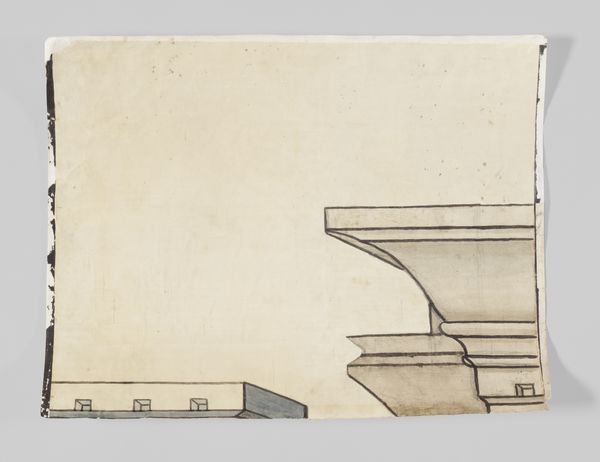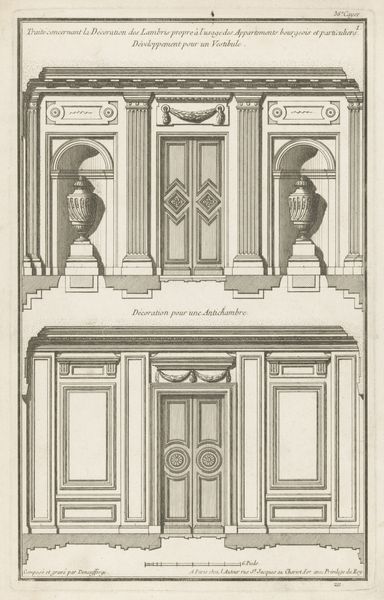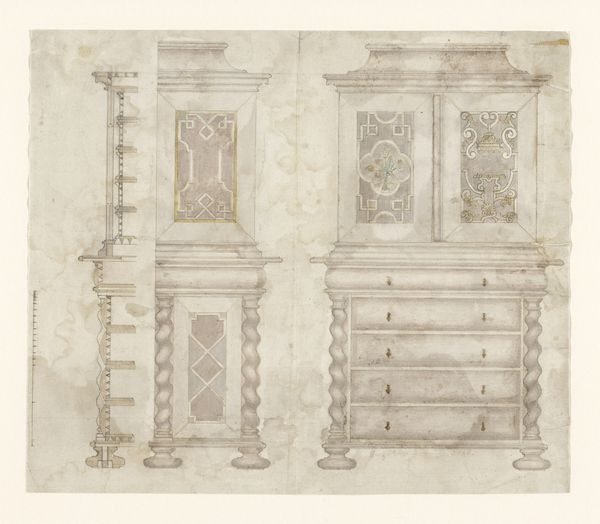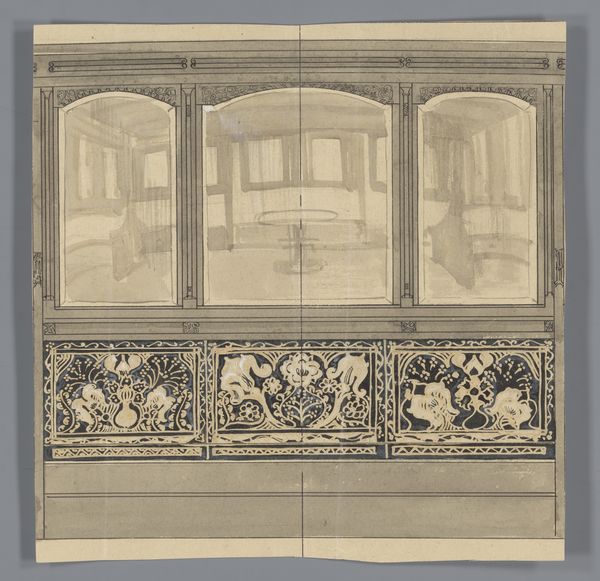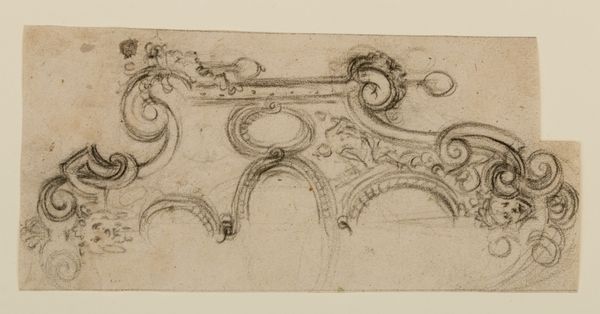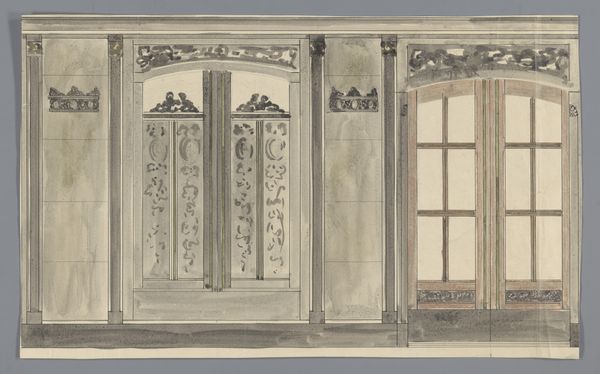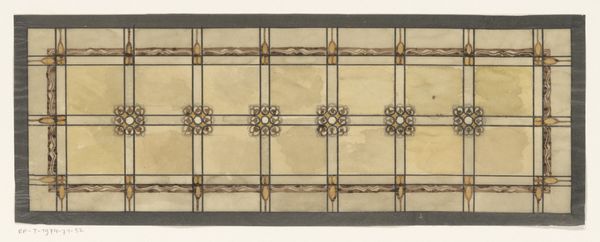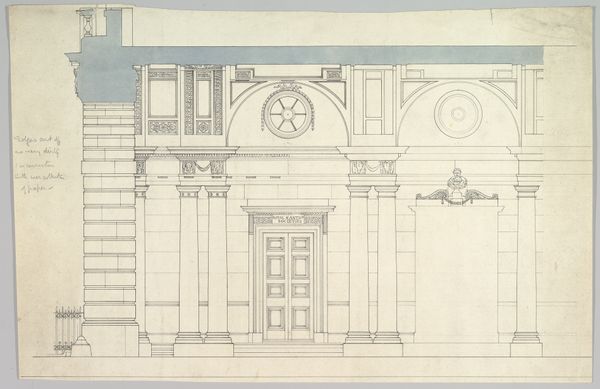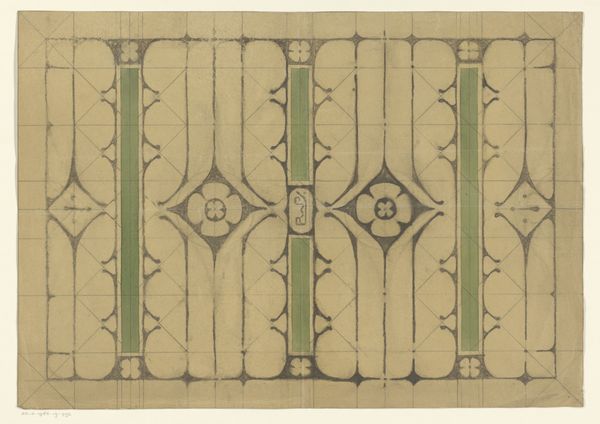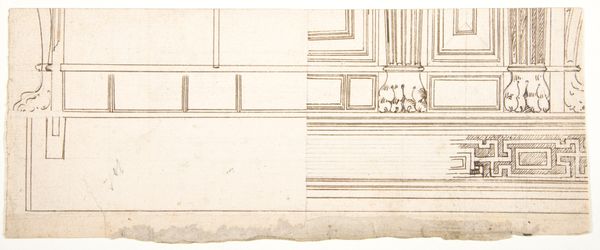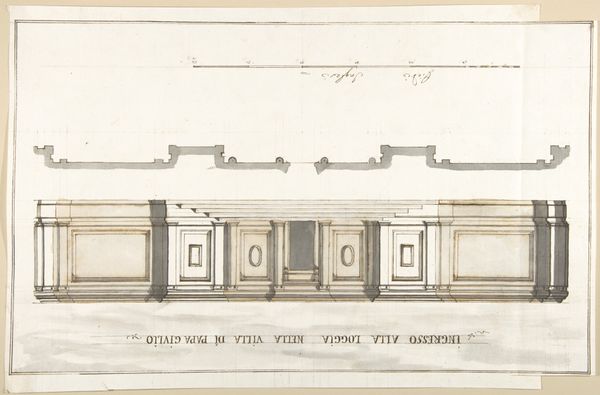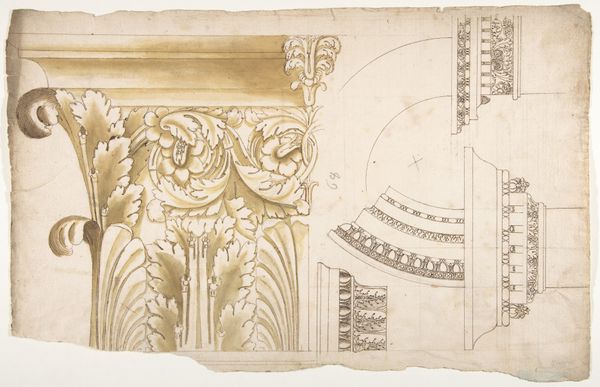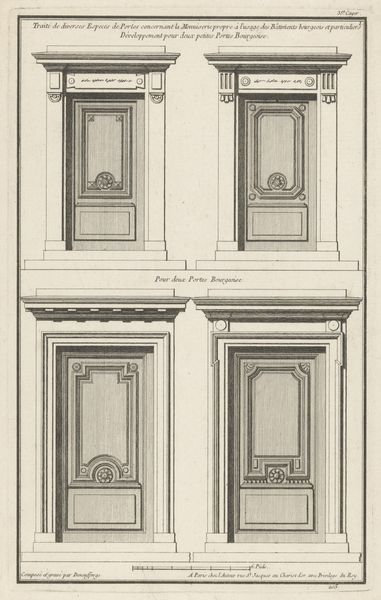
Fragment karton voor het glasraam in de westgevel van Joris van Egmond (Bisschop van Utrecht 1535-1559) voor de Sint Bavo Kerk te Haarlem 1541
0:00
0:00
drawing, paper, watercolor, ink, architecture
#
drawing
#
paper
#
11_renaissance
#
watercolor
#
ink
#
geometric
#
line
#
history-painting
#
architecture
Dimensions: height 12035 mm, width 580 mm, height 3710 mm, height 76 cm, width 27 cm, depth 27 cm
Copyright: Rijks Museum: Open Domain
Curator: Welcome. This is a study attributed to Gerrit Boels from 1541. It's titled "Fragment carton for the glass window in the west facade of Joris van Egmond (Bishop of Utrecht 1535-1559) for the Sint Bavo Kerk in Haarlem." The work is executed in ink, watercolor, and drawing on paper. Editor: My immediate impression is that it feels unfinished, yet monumental. The austerity of the lines, those shades of diluted ink creating subtle depths, imbue it with an almost haunting stillness, despite only presenting a small fraction of a larger architectural element. Curator: Indeed. It is just a fragment. What we see here is a preparatory drawing, a "carton" as it was known, for a stained glass window. The subject, Bishop Joris van Egmond, would have been a significant figure in Haarlem’s religious and political landscape. His image, immortalized in glass, reinforced the Church’s authority. Editor: The drawing is quite economical. Boels uses a strict geometry and repetition to render architecture believable to our eyes. There’s also a rather muted palette; a series of grays modulating between black lines. Curator: Exactly! The clean lines emphasize a sense of order during the early Renaissance, when Humanist philosophy led to great developments in architecture and construction, particularly ecclesiastical buildings intended to impress local faithful followers, as well as rival cities, and visitors. It makes me consider just how artworks reinforced hierarchical relations between clergy and their religious constituents in 16th-century society. Editor: Although rudimentary, it does offer an idea about spatial relationships via its linear perspective. You start to see these very controlled progressions that offer visual information about form and recession. It is subtle but efficient. Curator: We see the remnants of religious iconography and the power dynamics of the time made visual. These designs circulated, and these buildings materialized due to vast financial and administrative systems during periods of tremendous political instability. It underscores how much art has to do with things other than artistry. Editor: Right, for me the beauty lies in its restrained and effective translation of three dimensions into two. Curator: Viewing art offers multiple lenses for examination. What moves some is not as interesting for others. Editor: True, yet it is why dialogue around a work enriches our understanding.
Comments
No comments
Be the first to comment and join the conversation on the ultimate creative platform.
